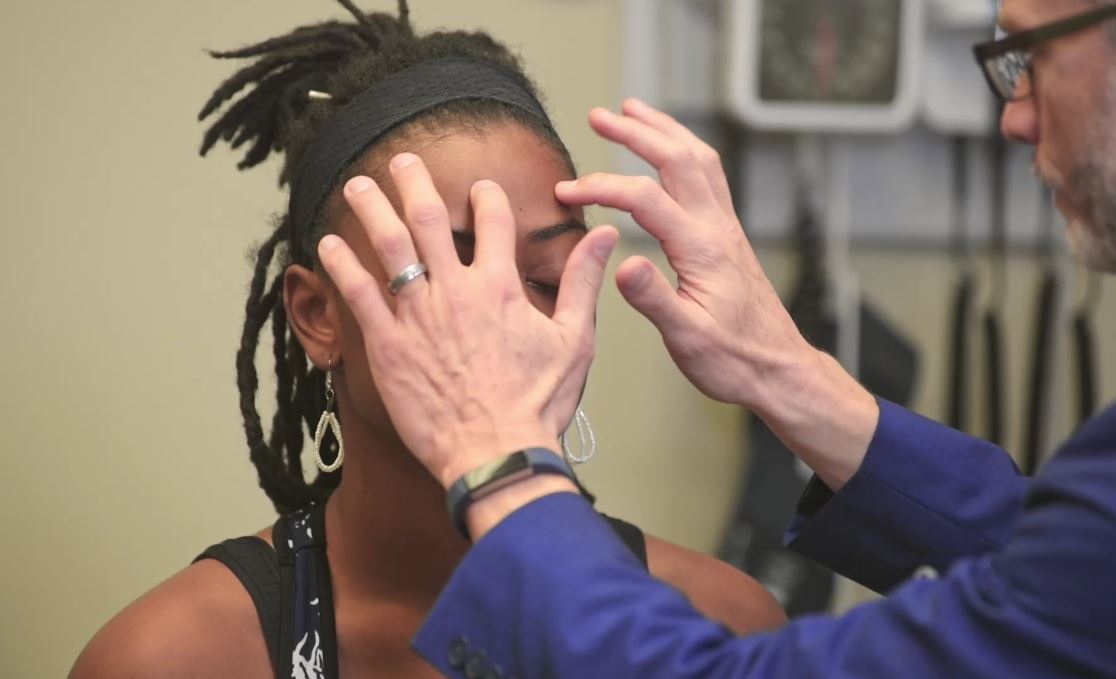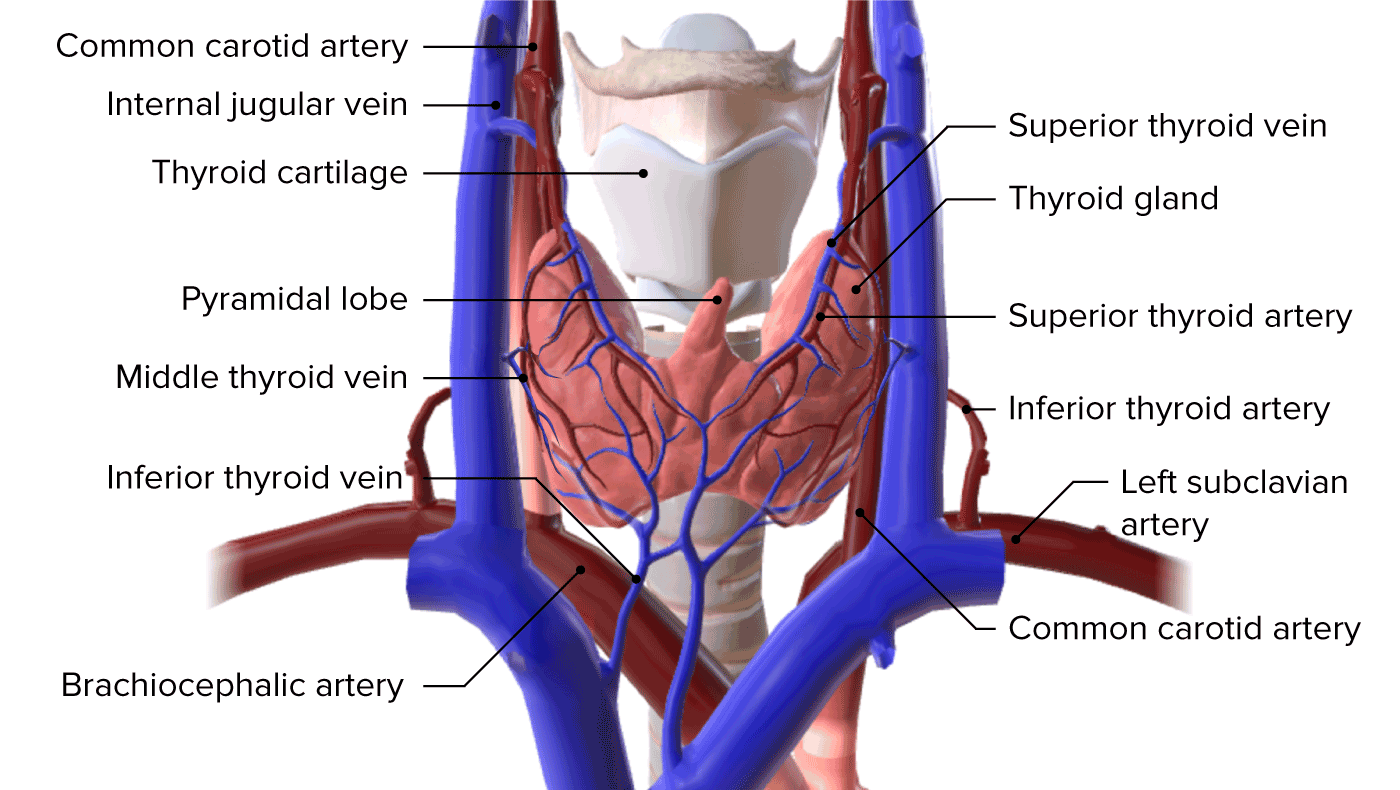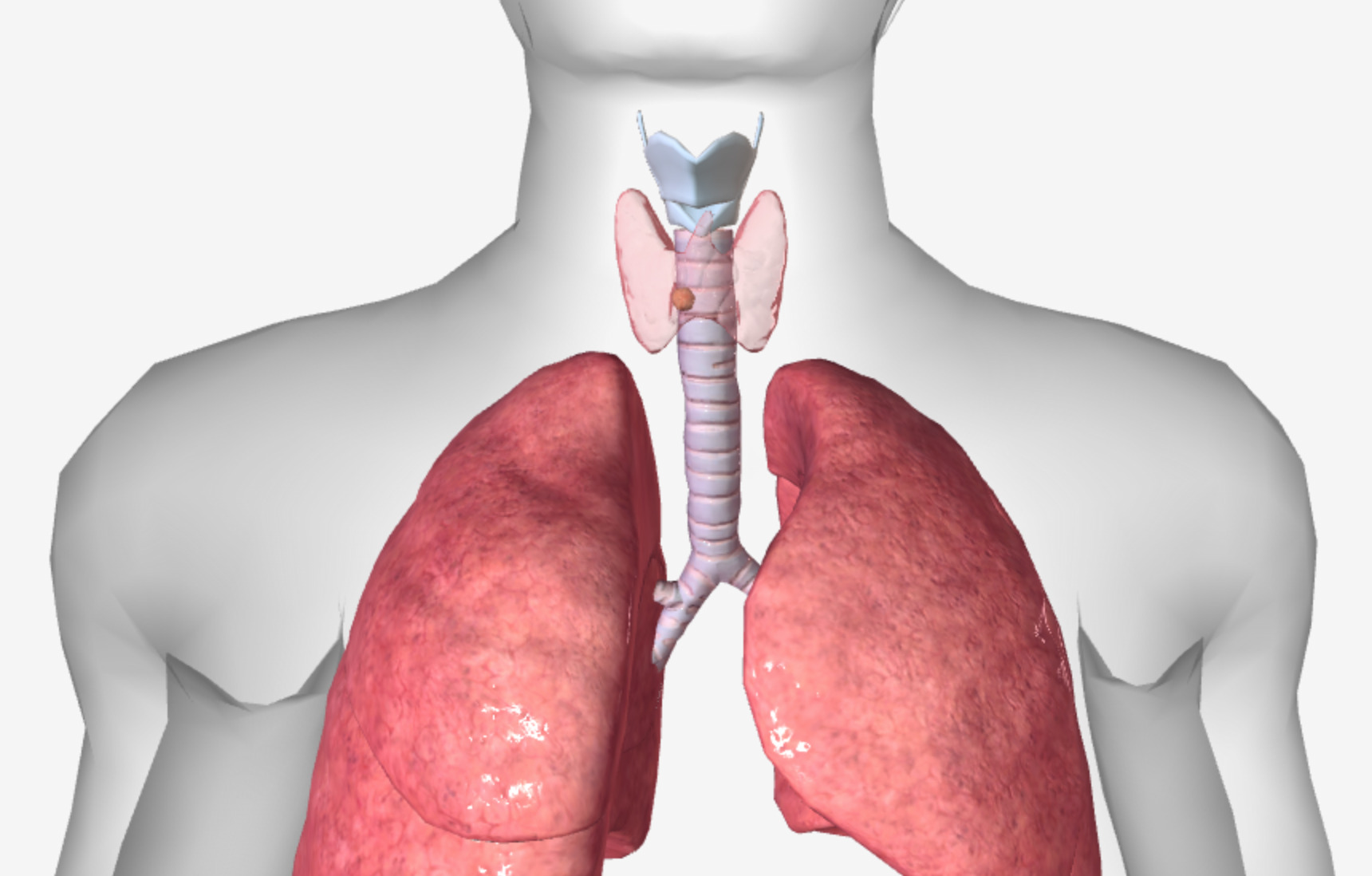Playlist
Show Playlist
Hide Playlist
Thyroid Cancer
-
Slides Thyroid tumors General Surgery.pdf
-
Download Lecture Overview
00:01 Welcome back. Thanks for joining me on this discussion of thyroid cancer in the section of general surgery. For thyroid nodules, remember, most are benign cysts and/or goiters. 00:14 But if your patient has neck irradiation, there’s approximately a 4% risk of cancer in thyroid nodules. What are some characteristics concerning thyroid nodules? Nodules in men that grow rapidly; there are hard or fixed nodules on examination; and particularly solid nodules or solitary nodules in elderly or young patients. On your physical examination, you may notice some nodules on careful examination particularly in thin necks. Remember, largely patients are asymptomatic. 00:55 Routine laboratory tests may not be that helpful. TSH however can be high, low, or normal. 01:03 Here’s a demonstration of an ultrasound on thyroid. Remember, thyroid ultrasounds are very common practice in a standard therapy. Notice on this image here the circular lesion in the middle is actually the trachea and the thyroid lesion is surrounding the trachea. 01:24 Biopsy is very important in thyroid diseases. Every patient with a neck mass should undergo a fine needle aspiration. This is a characteristic picture of a needle that is placed on suction and inserted under local anesthesia oftentimes with ultrasound guidance. The cellular architecture will allow the pathologist to determine whether or not malignancy is present. Here’s how pathologists classify the sample you provided through your fine needle aspiration. It can be nondiagnostic requiring repeat FNA under ultrasound guidance; or it can simply contain benign cells, in which case it requires repeat after 12 or 24 months to assure stability or growth. Next result is follicular lesions in which the management depends on the serum TSH level. Then there is atypia of undetermined significance which requires repeat in 2 to 3 months to check for pathological changes. 02:17 Next is a follicular neoplasm and something that may be suspicious for malignancy; or frankly, malignant, in which surgery is the next step. 02:26 Here are some cancer types to be aware of. 02:28 Papillary cancer is one of the most common. The treatment usually involves surgery +/- lymph node dissection. Remember, the lymph node dissection is usually guided by whether or not there’s palpable lymph node disease. These patients usually undergo a radioactive iodine therapy postoperatively. In medullary cancer, there’s involvement of calcitonin. 02:51 Calcitonin can be used as follow up and does not respond to radioactive iodine. These are some special characteristics of medullary cancer. In follicular thyroid cancer, again treatment involves surgery +/- lymph node dissection and usually followed by radioactive iodine therapy. 03:09 Unfortunately, a small percentage of patients will present with anaplastic disease. 03:17 Anaplastic cancer is usually treated by palliation only or clinical trials as these patients uniformly do poorly. What does thyroid surgery entail? Here’s a schematic of an exposed neck. 03:33 Trachea is usually identified and we preserve the recurrent laryngeal nerve. Both sides are identified. Additionally, we also want to protect the parathyroid organs because the parathyroid glands can be damaged or become ischemic after total thyroidectomy. 03:47 This would render the patient hypocalcemic. Here is a depiction of superior laryngeal nerve as well as recurrent laryngeal dissection. Notice the internal jugular vein and the common carotid being retracted laterally. This thyroid lobe is being retracted medially and showing the posterior vessels.
About the Lecture
The lecture Thyroid Cancer by Kevin Pei, MD is from the course General Surgery.
Included Quiz Questions
Which patient's presentation is most concerning for thyroid cancer?
- A 27-year-old asymptomatic male with a firm, fixed 2 cm thyroid nodule.
- A 33-year-old woman with a history of hypothyroidism with a 1 cm mobile thyroid nodule.
- A 36-year-old woman with a history of hypothyroidism on levothyroxine treatment for the past 8 years with a slightly enlarged thyroid gland without any distinct nodules.
- A 45-year-old woman with symptoms of weight gain, fatigue, cold intolerance, and dry skin.
- A 30-year-old man with symptoms of excessive sweating, weight loss, hyperactivity, exopthlamos, and a slightly enlarged thyroid gland without any palpable nodules.
Which of the following types of thyroid cancer has the worst prognosis?
- Anaplastic
- Follicular
- Medullary
- Papillary
For which of the following patients is radioactive iodine treatment ineffective?
- A patient with medullary thyroid cancer
- A patient with papillary thyroid cancer
- A patient with follicular thyroid cancer
- A patient with Grave's disease
Customer reviews
5,0 of 5 stars
| 5 Stars |
|
2 |
| 4 Stars |
|
0 |
| 3 Stars |
|
0 |
| 2 Stars |
|
0 |
| 1 Star |
|
0 |
Thanks for the nice way to review clinical topics, I love the easy and clear way of presentation
Clarity and accuracy of his making all adds in the topic a simple easily understading one is a best example hidden in his lecture. A clear understanding of a complicated study could be possible even for avarage inteligent reader. 2nd thing is illustrations in every aspect made it highly comprehencive and brief






